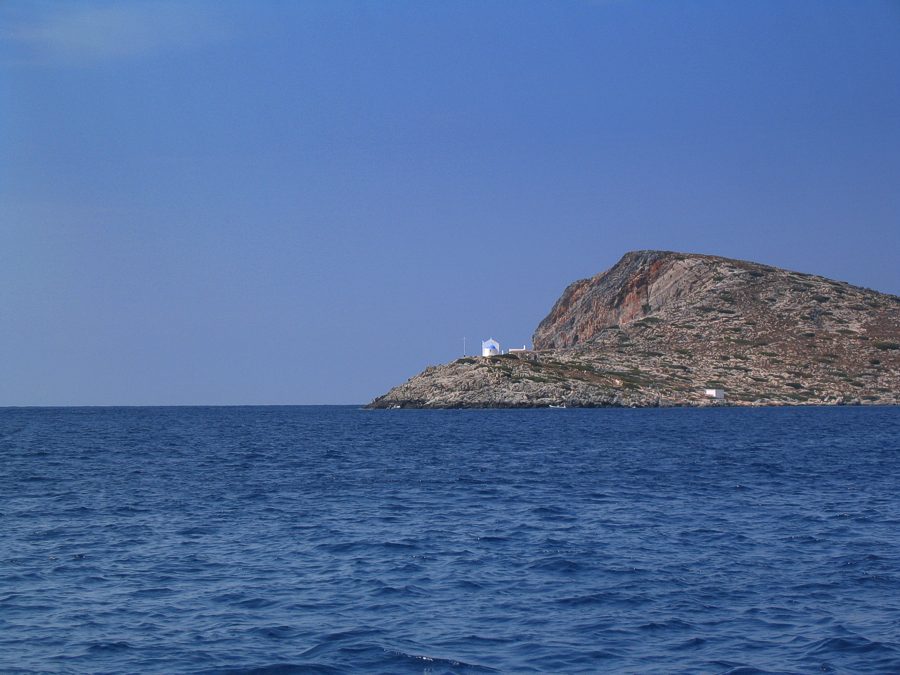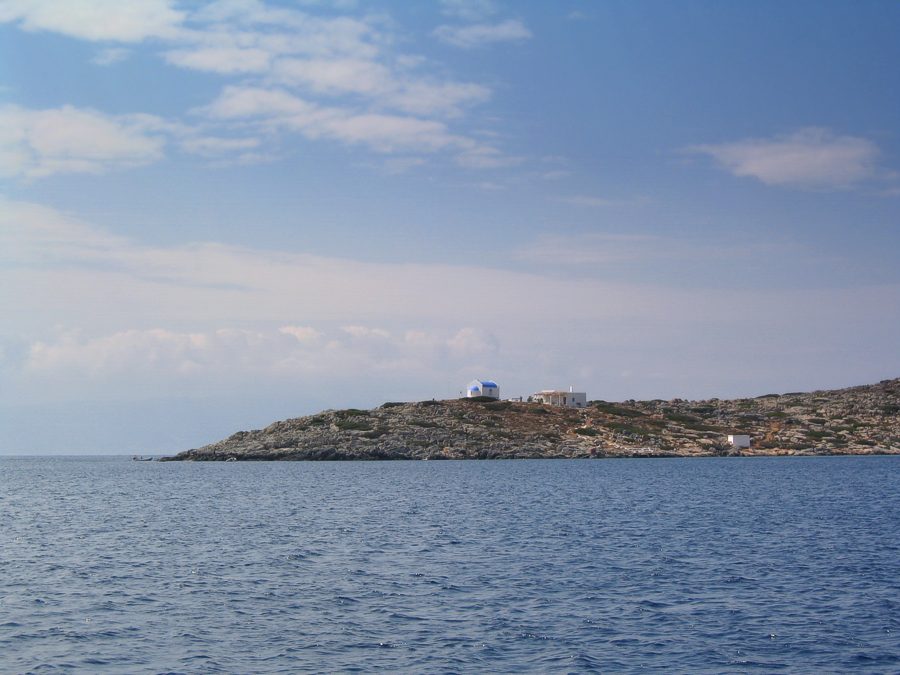Dia island
Dia (GR: Δία & Ντία) is an uninhabited island approximately 7 nautical miles north of Heraklion. It is surrounded by small rocky inlets and its maximum length is 5kms while its maximum width 3kms. Dia is one of NATURA's protected areas due to its status as a biotope for endemic plants and for plants with low dispersal within the Southern Aegean.
It is also a vital breeding site for seabirds and species associated with coastal cliffs and one of the most important nesting areas for Eleonora's Falcon in the Southern Aegean. Monk seals are also often seen by local fishermen around the shores.
Dia looks like a giant lizard when viewed from the city of Heraklion and there is a legend that a giant lizard tried to destroy the island of Crete, but Zeus turned it in to stone with a thunderbolt, thus creating the island.
There is no regular connection to Dia and the only way to access it is by private boat or join one of the organised daily cruises departing from Heraklion and other resorts of the north coast.
Sunday, February 19, 2012
Crete Property, Elounda Beach Resort, Crete Houses, Building, Davide Macullo
Crete Property, Elounda Beach Resort, Crete Houses, Building, Davide Macullo
Contemporary Cretan homes, Greece, by Davide Macullo Architects
Elounda Beach - Crete Resort
Bungalows in Elounda, Crete, Greece
The amazing location of the site in the worldwide known resort Elounda Beach (leading of the world hotels) suggests a new project simulation that aims to link the scale of the land with the one of the sea marked by the beautiful surrounding bay that offers intimacy and wide view to the horizon at the same time.
Set back on the coast the raw of volumes faces the water as they would be anchored yachts towards the sea, while proposing a urban atmosphere on the land side. The news created pathways with open views to the sea have a reduced scale that reminds the ancient streets of coastal villages but in a contemporary way.
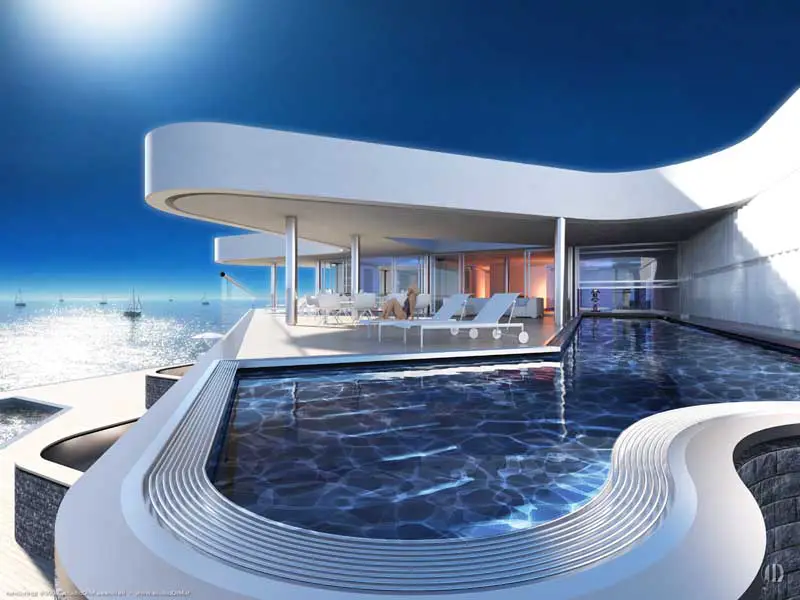
The strength geometry of the single units becomes a fluent landscape towards the sea through the sequence of rounded surfaces and 45° wall lines carving the deepness of the volumes. The whole system becomes a new artificial landscape that saws the two different conditions.
The use of dark grey stone for the cladding of the exterior walls set the new volumes in harmony with the surrounding nature and the use of natural materials as wood and leather enwraps the people in a warm atmosphere of natural taste.
Elounda Beach Resort Villas Crete - Building Information
Architects: DAVIDE MACULLO - Lugano - Switzerland
MAKIS LAHANAS – Athens - Greece
Collaborators: MICHELE ALBERIO - Como – Italy
LORENZA TALLARINI – Lugano – Italy
MARINA RAVELLI - Como – Italy
Engineer: Ypsilon Consulting Engineers Ltd. - Athens - Greece
Realization: 2006-
Rendering: STUDIO DIM - Firenze – Italy
Elounda Beach Resort Villas images / information from Davide Macullo Architects
http://www.e-architect.co.uk/greece/crete_houses.htm
Contemporary Cretan homes, Greece, by Davide Macullo Architects
 |
| Elounda Beach Resort Villas |
Bungalows in Elounda, Crete, Greece
The amazing location of the site in the worldwide known resort Elounda Beach (leading of the world hotels) suggests a new project simulation that aims to link the scale of the land with the one of the sea marked by the beautiful surrounding bay that offers intimacy and wide view to the horizon at the same time.
Set back on the coast the raw of volumes faces the water as they would be anchored yachts towards the sea, while proposing a urban atmosphere on the land side. The news created pathways with open views to the sea have a reduced scale that reminds the ancient streets of coastal villages but in a contemporary way.

The strength geometry of the single units becomes a fluent landscape towards the sea through the sequence of rounded surfaces and 45° wall lines carving the deepness of the volumes. The whole system becomes a new artificial landscape that saws the two different conditions.
The use of dark grey stone for the cladding of the exterior walls set the new volumes in harmony with the surrounding nature and the use of natural materials as wood and leather enwraps the people in a warm atmosphere of natural taste.
Elounda Beach Resort Villas Crete - Building Information
Architects: DAVIDE MACULLO - Lugano - Switzerland
MAKIS LAHANAS – Athens - Greece
Collaborators: MICHELE ALBERIO - Como – Italy
LORENZA TALLARINI – Lugano – Italy
MARINA RAVELLI - Como – Italy
Engineer: Ypsilon Consulting Engineers Ltd. - Athens - Greece
Realization: 2006-
Rendering: STUDIO DIM - Firenze – Italy
Elounda Beach Resort Villas images / information from Davide Macullo Architects
http://www.e-architect.co.uk/greece/crete_houses.htm
Some pictures of Anissaras, Analipsi and Sunsets
 |
| Looking West towards Iraklion (23 km away) |
 |
| Sunset from Anissaras |
 |
| You'll see boats in the most unusual and unexpected places |
 |
| Never get tired of these Sunsets: walking to Analipsi |
 |
| Flying the flag, Analipsi |
 |
| Island Style: Winter in Anissaras |
 |
| What do you expect? Winter, Anissaras |
 |
| The sea had two shades of blue |
Friday, February 17, 2012
Όλη η Ελλάδα στο fb ! (Greece on fb!)
(2) ~Όλη η Ελλάδα στο fb ! (Greece on fb!)~
https://www.facebook.com/media/set/?set=a.195752167184553.45793.195739923852444&type=3
Photo Album of Heraklion/HPAKLEIO
(Let the pictures talk for themselves...)


Supreme standard olive oil from organic cultivation in Crete, Greece
CRETA OIL
Crete - Greece
But for sure oil has been made from olives in Crete since the dawn of history, and today's olive trees are the result of thousands of years of cultivation. Therefore Crete can at least be estimated as the origin of olive oil. |
| On Crete, olive oil is staple food. It is of considerable calorific value so it provides energy to the body. The so-called "Cretan diet" is simply the traditional composition of the island's menu which is based upon olive oil as the primary source of energy. | ||||
| Among all oils which suit as foodstuff, olive oil has the highest quota of unsaturated fatty acids. It therefore lowers the blood cholesterol level and this way prevents heart and circulation diseases effectively. So the Cretans' outstanding life expectancy just results from the fact that their most important foodstuff accidentally is especially advantageous to heart and circulation. | ||||
The edible oil produced this way was called "cold pressed" (though daytime temperature can quite possible rise to
Cooked oil however does not suit as edible oil but only for manufacturing soap, and for use as lamp oil, because several etheric components which work as natural preservatives decompose at temperatures above |
The Cretans are lucky to have olive trees on their island which deliver oil of particularly low acidity, due to cultivation of species, the soil and the climate. In fact only the oil of highest quality produced here is sold as "Cretan oil": Minor sorts are delivered to other Mediterranean countries where they blend it with their own production, in order to improve stability.
| During the last decades, organic cultivation methods are used increasingly. Single-crop farming is replaced stepwise as they today know about interaction between different plants. So since several years, some responsibly thinking farmers leave room between their olive trees for so-called weeds again as they reduce the total production of a healthy olive grove negligibly. | ||||
| Use of pesticides however becomes completely unnecessary. Former expenses for chemicals can be saved, and once again it comes to light that ecological measures support economy also. | ||||
DYNAMIKI SA
DYNAMIKI SA | TECHNICAL COMPANY | CONSTRUCTION COMPANY | LAND GRANTING | SALES OF LUXURIOUS VILLAS | HERAKLION | CHANIA | CRETE | GREECE

These specific villas are available for rental. Each villa includes 3 bedrooms with their individual bathroom with a Jacuzzi, a telephone device, internet, satellite television, an alarm system, outside doors cameras connected to the TV, air-condition for cool-heat (VRV), a living room with a fireplace, a full equipped kitchen with electrical devices, a massage armchair, a laundry-drying room, a heating pool and a 700square meter garden with a garage and a barbecue place. All villas have an unlimited view to the ocean and the mountain.

email : info@dynamikisa.gr
Do not hesitate to contact us for any issue that concerns you.


These specific villas are available for rental. Each villa includes 3 bedrooms with their individual bathroom with a Jacuzzi, a telephone device, internet, satellite television, an alarm system, outside doors cameras connected to the TV, air-condition for cool-heat (VRV), a living room with a fireplace, a full equipped kitchen with electrical devices, a massage armchair, a laundry-drying room, a heating pool and a 700square meter garden with a garage and a barbecue place. All villas have an unlimited view to the ocean and the mountain.

email : info@dynamikisa.gr
Do not hesitate to contact us for any issue that concerns you.
| Contact Persons | : | X. KROMMYDAKIS S.A. | |
| Address | : | 164 KISSAMOY AVEN. | |
| City | : | CHANIA | |
| Telephone | : | +30 6988 915122, +30 28970 23656 | |
| +30 6946 123076, +30 28210 88240 | |||
| Fax | : | +30 28970 21132 | |
| : | manager@calderabeach.com |

Tigris Psarantonis
http://stigmes.gr/br/brpages/articles/PSARANTONIS_LYRE.htm
PSARANTONIS: THE LYRE IS THE INSTRUMENT OF GOD
For many years Psarantonis, one of the greatest Greek traditional music artists, has expressed the desire to give a concert at Herodus Atticus Theatre but some short-sighted bureaucrats wouldn't give him the permission. He finally managed to perform there this summer, and the magic notes of his lyre flooded the ancient theatre. Psarantonis shares with STIGMES readers his thoughts about contemporary Cretan music, the concerts he has given abroad, his childhood in his hometown of Anogia, the lyre, which he characterizes "the instrument of God" and also the current critical situation of our country.
Ross Daly in Concert, Crete, Greece
http://www.rossdaly.gr/en/biography

Ross Daly Biography
Many years before what we call "World Music" appeared on the scene, certain individuals had already understood the enormous value and vast variety of the world's various musical traditions and had dedicated their lives to their study. One such person is Ross Daly.
Although of Irish descent, Ross Daly does not really fit into any particular ethnic stereotype given that his life has been spend in many different parts of the world and his home for the last 35 years is the island of Crete in Greece. Ross Daly, at a very early age, discovered that music was, in his own words, "the language of my dialogue with that which I perceive to be sacred".
This dialogue eventually led him to the great modal traditions of the Middle East, Central Asia, and the Indian Subcontinent where he finally found the musical archetypes that he had been searching for all his life.
In these traditions he encountered music which was not merely a vehicle of self-expression, but which was able to take one beyond what one normally perceived to be the boundaries of one's self into other trans-personal realms of experience.
This discovery changed everything in Ross Daly's life and he subsequently gave up all other activities and dedicated his life to the study of the innermost secrets of these musical traditions as well as to the art of composition. He subsequently travelled extensively, studying under many of the world's greatest masters of modal traditions. Since 1975 he has been based on the island of Crete where he is universally recognized as one of the foremost experts on the island's rich musical tradition.
He is also especially well known and respected for his ability to bring artists of different and seemingly unrelated traditions together in collaborations of unique quality and depth. In 1982 he established the Labyrinth Musical Workshop which is today situated in the village of Houdetsi 20 kms south of the capital city of Herakleion.
The Musical Workshop Labyrinth (www.labyrinthmusic.gr) is a unique educational institution dedicated to the study of the world's modal musical traditions and every year Ross Daly and his colleagues organize an impressive number of seminars and master-classes which are taught by many of the world's greatest master-musicians.
Each year hundreds of students from all over the world arrive in Houdetsi in order to study with some of the most renowned teachers of modal music from all over the world. Ross Daly's impressive collection of more than 250 instruments which he has collected over the years during his travels is also permanently on exhibition in the building of Labyrinth.
After many years of intensive training in a variety of musical traditions, Ross Daly turned his attention largely to composition drawing heavily on all of the knowledge which he acquired during his long apprenticeships. Today he has released more than thirty five albums of his own compositions as well as of his own arrangements of traditional melodies that he collected during his travels. The island of Crete in Greece still provides a base for his personal and musical research as he continues travelling around the world performing his music...
Today, Ross Daly continues travelling and performing in Greece and abroad whilst simultaneously directing the Musical Workshop "Labyrinth" in the village of Houdetsi on Crete. (www.labyrinthmusic.gr)
http://www.labyrinthmusic.gr/en
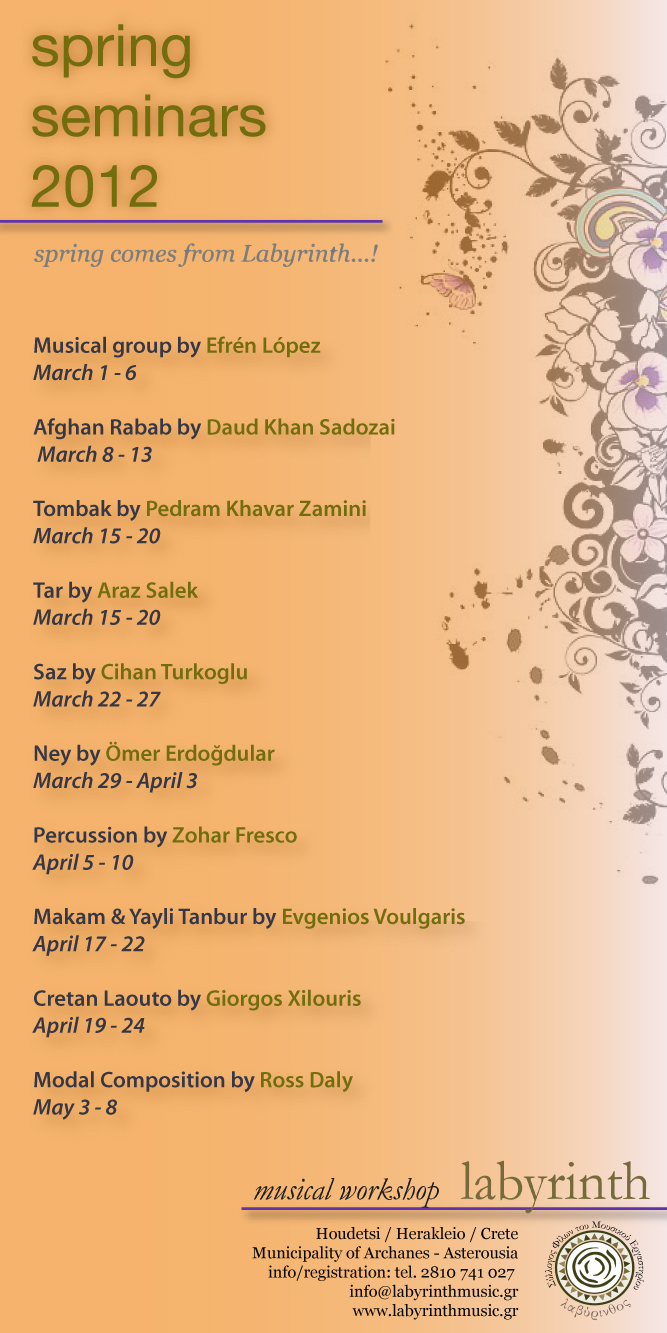
http://stigmes.gr/br/brpages/articles/rossdaly.htm
ROSS DALY
There is no difference between a circle and a straight line
Ross Daly is an Irish self-exiled musician, speaking fluently Greek, with an intense Cretan accent due to his long-lasting stay in Crete .
Though he says that he does not have a homeland as he travels often, he has lived in Crete more than anywhere else, 10 years in Chania and 10 in Iraklion . He has established lately a Musical Center at Houdetsi, near Iraklion, including a folkloric instruments museum.
...I deal with musical instruments from when I was 4 years old! My mother is a piano player and initially learned me to play the piano. However suddenly I made my small personal revolution turned in studying the cello till I was 10, then tried classic guitar and so on… Some years later, I began to deal with traditional music, having the first stimuli from San Francisco where I was staying then. It was the ‘60’s and musical tradition of the East, particularly of India , was on the rise. Thus I began to study sitar in England , I started traveling, one thing brings the other, as it always happens …
...my first visit in Greece , was in Crete , where I heard the lyre which impressed me greatly. You know, outside Greece the general impression is that Greek music is only bouzouki, and not even the “right” bouzouki. We listen to sirtaki and the popular songs of '60’s but I consider it has been degenerated. No one knows that there are lyres, lutes, santouri… If you say to a foreigner that the most widespread Greek instrument is the clarinet, you will pass for insane!
… Improvisation is to act musically and experience the moment. This means that to live the moment, you have to leave yourself otherwise you will not succeed. …
Thursday, February 16, 2012
Youth Hostel Rethymno Gallery 2011
Youth Hostel Rethymno Gallery 2011

The reception hours are from 08.00–13.00 and 17.00–23.00.
http://www.yhrethymno.com/yhfaq.html
You can always be assured of a warm welcome and all visitors will find a friendly atmosphere. Set within peaceful surrounding streets yet close to the town's long sandy beach and exciting night-life we hope your stay at Youth Hostel Rethymno will be a memorable one.
Take some time to learn more about Youth Hostel Rethymno or discover Rethymno itself. Internet access is available and reservations can be made on-line.
http://www.yhrethymno.com/index.html

 |
| Drink problem? |
Frequently Asked Questions
Q: Do I need an international youth hostel membership card?
A: No. This hostel as most in Greece is privately owned and run.Q: How do I get to the hostel?
A: There are ferries everyday to Heraklion or Hania from Piraeus which leave at 21.00 hrs. Buses to Rethymno are available to ferry passengers as they disembark. There are regular bus services from both Chania and Heraklion all day every day. Refer to the map on our homepage for walking directions from the bus station.Q: When is the hostel open?
A: The hostel is open every day of the year, 24 hours per day.The reception hours are from 08.00–13.00 and 17.00–23.00.
 |
| Old town map and how to find us. |
Q: How much is this going to cost me?
A: The price per night is 11 € per person. There is a special weekly rate of 65 € and special discounts for groups.Q: What sorts of room are available?
A: All the rooms in the hostel are dormitories most with 6-8 beds. There are no single or double rooms.Q: How long can I stay for?
A: There is no limit on how long you can stay. Students studying at the town's university and guests combining holiday and work often take advantage of our long-stay availability. |
| Arkadi Monastery |
Q: Am I too young/old to stay at your hostel?
A: There are no age limits. We often have more mature hostellers visiting us and joining the fun. Family groups are welcome but due to the demand in high season we must have a reservation well in advance.Q: Do we need to bring sleeping bags/sheets?
A: It is advisable to bring your own if possible. We do have a limited number of sheets (cost 1 €) and for the winter blankets are available (free of charge).http://www.yhrethymno.com/yhfaq.html
 |
| Samaria Gorge |
You can always be assured of a warm welcome and all visitors will find a friendly atmosphere. Set within peaceful surrounding streets yet close to the town's long sandy beach and exciting night-life we hope your stay at Youth Hostel Rethymno will be a memorable one.
Take some time to learn more about Youth Hostel Rethymno or discover Rethymno itself. Internet access is available and reservations can be made on-line.
 |
| Walk About |
http://www.yhrethymno.com/index.html
Crete, E4-European Long Distance Walking Paths
Crete | E4-European Long Distance Walking Paths - Trekking & Hiking in Crete
http://www.completely-crete.com/E4-path.html
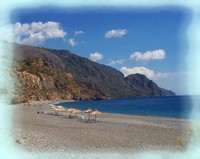
Walking & Hiking in Crete
NOTE:
Additional warning: We have been informed by some hikers that many of the distances shown below are inaccurate. We advise paying attention to detailed maps and to study them thoroughly before each day's route is planned.
(Some helpful maps here)
Note: Text and written information below is contributed by Oreivatein.com
Map and photographs -Copyright CreteTravel.com 2001-2008.

The E4 path on Crete forks in Sougia in Northern and southern parts.
http://www.cretetravel.com/Activities/E4_walking_path.htm
http://www.completely-crete.com/E4-path.html
There is one large trekking or hiking route on the Greek Island of Crete, which is part of the E4 European Long Distance Path. The E4 trail covers the White Mountains (Lefki Ori), Mount Psiloritis (Mount Ida) and the Mount Dikti. The E4 Path is 320 km long.
It begins at Kastelli in the west of Crete and crosses along the whole Island reaching Kato Zakros in the east where it ends.
The E4 Path route is quite varied and can range from what amounts to simple walking on smooth asphalt roads to some hefty hiking in rugged gorges, right up to some real mountain trekking.
In parts the E4 Path is very overgrown, difficult to follow, and often not marked at all.
At Sougia, a small resort on the south coast, the E4 Path forks into two tracks, one along the coast, which is very rough, and one through the mountains. The tracks converge on the south coast near Frangokastello, but immediately branch out again into two sections.
Mountain Refuge Huts
Hikers and trekkers embarking upon the E4 trail need to think about pre-planning their accommodation. This applies in particular to the alpine leg of the E4 Path, when any proposed stay at a mountain refuge hut needs to be pre-arranged.
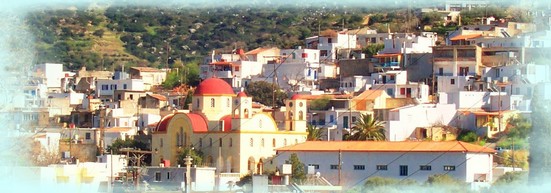
Don't forget to visit our Cretan Village Shop where you can buy a range of Crete books and maps of Crete. We stock a small handpicked collection of Crete books that are not available through Amazon and will be hard to find outside of Crete itself. They cover subjects such as Crete guide books and maps, the Samaria Gorge, Wild Flowers of Crete, Horta and the Cretan Diet cookery recipes.
We ship anywhere in the world, direct from our little Crete Village Shop!
http://www.completely-crete.com/village-shop.html
Here's some useful numbers and contact details:
The Mountaineering Club of Lasithi
Telephone 0030 28970 23230
Greek Association of Mountaineers Rethymnon
Telephone 0030 2831 057766 Email: eosrethymno@rethymnon.com
Mountaineering and Skiing Club Of Iraklion
Telephone 0030 812 27609 Email: myrto@her.forthnet.gr
Mountaineering Club Of Hania
Telephone 0030 821 74560.
http://www.completely-crete.com/E4-path.html

Walking & Hiking in Crete
European Long Distance Walking Path E4 - Crete
NOTE:
Warning - Many portions of this route include harsh and arid hiking conditions. Carrying supplies and especially adequate water are essential. All appropriate preparations should be made and detailed walking maps are a must. It is advisable to walk as a group of two or more and to inform someone who can check your progress, where you are and your intended next destination at each stage of the journey.
We receive reports of parts of this path being completely blocked, badly signed or not signed at all (Sougia to Agia Roumelli being specially bad and not always passable). Ask several people locally before starting out and allow for the possibility of having to return to your starting point after many hours walking. It is easy to get lost. Proceed with great caution.Additional warning: We have been informed by some hikers that many of the distances shown below are inaccurate. We advise paying attention to detailed maps and to study them thoroughly before each day's route is planned.
(Some helpful maps here)
Note: Text and written information below is contributed by Oreivatein.com
Map and photographs -Copyright CreteTravel.com 2001-2008.

The E4 path on Crete forks in Sougia in Northern and southern parts.
The Northern part is purely alpine and requires alpine experience from the hiker. The southern part on the south coast of the island, is very rough at many points. At some positions between Sougia and Chora Sfakion the path is abandoned. Sure-footing is necessary for both branches. Neither branch goes through the Samaria gorge. The length of each branch is approximately 320 km and one needs 3 weeks for the complete hike.
http://www.cretetravel.com/Activities/E4_walking_path.htm
http://www.completely-crete.com/E4-path.html
The E4 Path offers lots of walking holiday opportunities on the Greek Island of Crete from gentle walks to very challenging hiking routes...
For those who like hiking, trekking, biking and walking and are up for a challenge then maybe the E4 European Long Distance Path, or at least part of it, will be right for you.There is one large trekking or hiking route on the Greek Island of Crete, which is part of the E4 European Long Distance Path. The E4 trail covers the White Mountains (Lefki Ori), Mount Psiloritis (Mount Ida) and the Mount Dikti. The E4 Path is 320 km long.
It begins at Kastelli in the west of Crete and crosses along the whole Island reaching Kato Zakros in the east where it ends.
The E4 Path route is quite varied and can range from what amounts to simple walking on smooth asphalt roads to some hefty hiking in rugged gorges, right up to some real mountain trekking.
In parts the E4 Path is very overgrown, difficult to follow, and often not marked at all.
At Sougia, a small resort on the south coast, the E4 Path forks into two tracks, one along the coast, which is very rough, and one through the mountains. The tracks converge on the south coast near Frangokastello, but immediately branch out again into two sections.
Mountain Refuge Huts
Hikers and trekkers embarking upon the E4 trail need to think about pre-planning their accommodation. This applies in particular to the alpine leg of the E4 Path, when any proposed stay at a mountain refuge hut needs to be pre-arranged.

Don't forget to visit our Cretan Village Shop where you can buy a range of Crete books and maps of Crete. We stock a small handpicked collection of Crete books that are not available through Amazon and will be hard to find outside of Crete itself. They cover subjects such as Crete guide books and maps, the Samaria Gorge, Wild Flowers of Crete, Horta and the Cretan Diet cookery recipes.
We ship anywhere in the world, direct from our little Crete Village Shop!
http://www.completely-crete.com/village-shop.html
Here's some useful numbers and contact details:
The Mountaineering Club of Lasithi
Telephone 0030 28970 23230
Greek Association of Mountaineers Rethymnon
Telephone 0030 2831 057766 Email: eosrethymno@rethymnon.com
Mountaineering and Skiing Club Of Iraklion
Telephone 0030 812 27609 Email: myrto@her.forthnet.gr
Mountaineering Club Of Hania
Telephone 0030 821 74560.
Villa Di Matala in Matala Crete Greece!
Villa Di Matala in Matala Crete Greece!


The ancient city that was found here, whose name we don’t know with certainty, was in prime mainly in the Roman period.
The houses and the public buildings of the city were found in the place of Goula under the current tourist settlement. In the south side of gulf, in the soft yellow rock of the coast were sculptured all the ships’ settlements. Nowadays some are even saved and can be seen.
At the northern side of gulf, the ancient residents had sculptured graves with terraces where they put their dead people during the roman period.
It’s worth reporting also the hill of Kastri southerly and above the current settlement where a strong and extensive fortress has been found and a fire tower, as well, that was very useful as a lighthouse for sailors.
Of course, despite their long history and their archaeological value, Matala became well known from the children of flowers (hippies) in the decade of 60’.
Nowadays it’s a hospitable place for thousands of tourists from the entire world. It is a small and quiet place which provides you everything, such as: restaurants, souvenir shops, taverns, bars, café, the amazing beach and many other things.
It doesn’t happen by chance that tourists entrust this place as their destination of holidays each year.
We look forward to seeing you here!
http://www.villadimatala.com/index.webman?section=matala&lang=en


Villa Di Matala is composed of separate small studios with two beds, cooker, equipped for the preparation of breakfast and small meals, bathroom (shower and wc), air-condition and balcony. Depending on your need we can place an extra bed.
Our hotel is surrounded by a garden and it offers to his visitors quietness and the possibility to relax in a beautiful and friendly atmosphere.
The distance from the sandy beach of Matala with the famous caves is hardly 900 meters (ten minutes walking) and from Kommos beach is roughly 1,5 km (10 minutes by car and 25 minutes walking).
Our hotel has been in operation since 1992 and henceforth many of our customers have become friends with our family and consider Villa Di Matala a permanent place for their vacation.
Your transport from the port or the airport of the city of Heraklion becomes very easy using either the bus or a taxi that we can send to you in a low price, in order to bring you to Matala and to our hotel.

http://www.villadimatala.com/index.webman?section=studios&lang=en


Contact us
Hotel Villa Di Matala
Kefalakis Konstantinos
Matala Heraklion Crete
Greece
P.C. 70200
Tel.: +30 2810 287150
Tel. - Fax.: +30 28920 45773
Mobile: +30 6937 834635, +30 6977 649290
E-mail: info@villadimatala.com
Bookings: Booking Form


About Matala Crete
During Antiquity, the natural bay of Matala was used as a city-port of Faistos initially and later of Gortyn, when Gortyn became capital of Crete.The ancient city that was found here, whose name we don’t know with certainty, was in prime mainly in the Roman period.
The houses and the public buildings of the city were found in the place of Goula under the current tourist settlement. In the south side of gulf, in the soft yellow rock of the coast were sculptured all the ships’ settlements. Nowadays some are even saved and can be seen.
At the northern side of gulf, the ancient residents had sculptured graves with terraces where they put their dead people during the roman period.
It’s worth reporting also the hill of Kastri southerly and above the current settlement where a strong and extensive fortress has been found and a fire tower, as well, that was very useful as a lighthouse for sailors.
Of course, despite their long history and their archaeological value, Matala became well known from the children of flowers (hippies) in the decade of 60’.
Nowadays it’s a hospitable place for thousands of tourists from the entire world. It is a small and quiet place which provides you everything, such as: restaurants, souvenir shops, taverns, bars, café, the amazing beach and many other things.
It doesn’t happen by chance that tourists entrust this place as their destination of holidays each year.
We look forward to seeing you here!
http://www.villadimatala.com/index.webman?section=matala&lang=en


About Villa Di Matala
Villa Di Matala is a small, beautiful, family hotel that is found in the region of Matala in the southern coast of Crete, in a quiet place with beautiful view of mountains in the valley of Matala.Villa Di Matala is composed of separate small studios with two beds, cooker, equipped for the preparation of breakfast and small meals, bathroom (shower and wc), air-condition and balcony. Depending on your need we can place an extra bed.
Our hotel is surrounded by a garden and it offers to his visitors quietness and the possibility to relax in a beautiful and friendly atmosphere.
The distance from the sandy beach of Matala with the famous caves is hardly 900 meters (ten minutes walking) and from Kommos beach is roughly 1,5 km (10 minutes by car and 25 minutes walking).
Our hotel has been in operation since 1992 and henceforth many of our customers have become friends with our family and consider Villa Di Matala a permanent place for their vacation.
Your transport from the port or the airport of the city of Heraklion becomes very easy using either the bus or a taxi that we can send to you in a low price, in order to bring you to Matala and to our hotel.

Price list
Rooms prices
Single Room
20 € Low season
25 € High season
Double room
30 € Low season
35 € High season
Triple room
40 € Low season
45 € High season
If you want, we can place an extra bed depending on your need.
Seasons
Low season
From 1st of April
To 15th of June
High season
From 16th of June
To15th of September
Low season
From 16th of September
To 31st of October

http://www.villadimatala.com/index.webman?section=studios&lang=en


Contact us
Hotel Villa Di Matala
Kefalakis Konstantinos
Matala Heraklion Crete
Greece
P.C. 70200
Tel.: +30 2810 287150
Tel. - Fax.: +30 28920 45773
Mobile: +30 6937 834635, +30 6977 649290
E-mail: info@villadimatala.com
Bookings: Booking Form
Holidays Greece, Crete, Aghios Nikolaos, Elounda, Kritsa, Kalo Chorio - Spinalonga
Holidays Greece, Crete, Aghios Nikolaos, Elounda, Kritsa, Kalo Chorio - Spinalonga
Spinalonga
The island of Spinalonga (official name Kalidon) is located in the eastern part of Crete, near the town of Elounda. Harking back to the Venetian occupation, the name Spinalonga is Italian, meaning "long thorn".

Spinalonga
The island of Spinalonga (official name Kalidon) is located in the eastern part of Crete, near the town of Elounda. Harking back to the Venetian occupation, the name Spinalonga is Italian, meaning "long thorn".

History
In 1579, the Venetians built a fortress on Spinalonga over the ruins of an acropolis. They kept control of the island until the Ottoman Empire took possession of it in 1715.
In 1579, the Venetians built a fortress on Spinalonga over the ruins of an acropolis. They kept control of the island until the Ottoman Empire took possession of it in 1715.
The island is notable for being one of the last active leper colonies in Europe, being used in this manner from 1903 until 1957. The last inhabitant, a priest, left in 1962. This was to maintain the religious tradition of the Greek Orthodox church, in which a buried person has to be commemorated 40 days, 6 months, 1, 3 and 5 years after their death.
There are two entrances to Spinalonga, one being the lepers' entrance, a tunnel known as Dante's Gate. This was so named because the patients did not know what was going to happen to them once they arrived. However, once on the island they received food, water, medical attention and social security payments. Previously, such amenities had been unavailable to Crete's leprosy patients, as they mostly lived in the area's caves, away from civilization, eating scraps left over by the wolves who shared their caves.
Spinalonga Today
Today, the unoccupied island is one of the main tourist attractions in Crete. In addition to the abandoned leper colony and the fortress, Spinalonga is known for its small pebble beaches. The island can easily be accessed from Elounda and Agios Nikolaos. Tourist boats depart from both towns on a daily basis. There is no accommodation on Spinalonga, meaning all tours last only a few hours. Boat trips from Elounda take approximately fifteen minutes while trips departing Agios Nikolaos can take upwards of one hour.
Today, the unoccupied island is one of the main tourist attractions in Crete. In addition to the abandoned leper colony and the fortress, Spinalonga is known for its small pebble beaches. The island can easily be accessed from Elounda and Agios Nikolaos. Tourist boats depart from both towns on a daily basis. There is no accommodation on Spinalonga, meaning all tours last only a few hours. Boat trips from Elounda take approximately fifteen minutes while trips departing Agios Nikolaos can take upwards of one hour.
The book "The Island" by Victoria Hislop is set on Spinalonga and shares the fictional story of a family's ties to the leper colony.
http://www.aghiosnikolaos.gr/index.php?option=com_content&task=view&id=25&Itemid=37
Battle of Crete - Australian Army History Unit - ARMY

No 1 - Battle of Crete by
Albert Palazzo
(2005)
Albert Palazzo
(2005)
Battle of Crete - Australian Army History Unit - ARMY
Between 20 May and 1 June 1941 the Second World War came to the Greek island of Crete. The Commonwealth defenders consisted of Australian, New Zealand and British refugees from the doomed Greek Campaign who had not recovered from defeat. Matched against them were crack German paratroopers and mountain soldiers who had only tasted victory. Over eleven days the two sides fought a desperate action that generated tales of stubborn determination and reckless bravery on both sides. It was an innovative campaign - warfare's first aerial invasion – and at times its outcome balanced on a knife edge. Richly illustrated, the Battle of Crete examines the commanders and the decisions they made, the men who fought, and the weapons they used in the epic struggle for the island.
http://www.army.gov.au/AHU/Battle_of_Crete.asp
Pictures from a recent walk
 | |
| Aloi Hotel (Anissaras) and its yellow "carpet". |
 |
| Aloi Hotel (Anissaras): nice balcony! |
 |
| Foteini dodging cars, he, he. |
 |
| Yellow is in, in Anissaras. |
 |
| Classic island style! |
 |
| Foteini trying to find her way in the bush! (Anissaras/Hersonissos) |
 |
| The path less travelled, he, he. |
Hope you enjoyed some of these casual pics! There'll be more... so please come back again. Thank you. Naste kala, Giasas! (Keep well, Cheers!) :-)
Subscribe to:
Posts (Atom)
